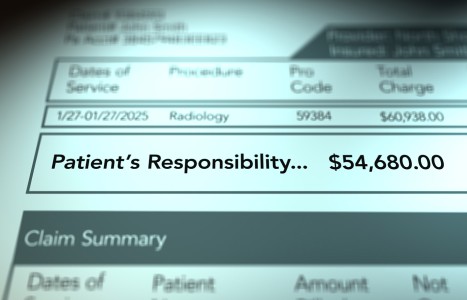On Oct. 21, 2025, a judge in Florida issued a groundbreaking decision in Complete Care v State Farm, 25-CA-1063. It concerns a fact pattern that many chiropractic doctors have faced wherein an insurer, such as State Farm or Allstate, decides to simply stop paying all claims submitted by a healthcare provider.
| Digital ExclusiveMultimodal Long-COVID Treatment: Has Innate Intelligence Arrived?
- It is essential to keep our mitochondria efficient and generating the energy production needed for optimal cellular respiration and homeostasis. The challenge is that mitochondrial function can be disturbed by viruses such as SARS-CoV-2.
- Exercise and antioxidants are beneficial to reverse the Warburg effect in both the treatment of long COVID and the age-related diseases that affect these systems.
- Beyond diet, exercise and supplements, chiropractic also plays a role in the multimodal treatment of long COVID.
The correlation between mitochondrial dysfunction and disease is gaining traction in the medical literature, pointing to lack of energy production as the etiology of disease. Yes, insufficient energy appears to cause pathology. In fact, the relationship between long COVID and mitochondrial dysfunction is well-established and was discussed previously in this column (January 2025).
The current Western medicine paradigm focuses on a pathoanatomical basis of disease. Organ-specific symptoms are related to organ-specific defects, namely that the physical/anatomical structure drives function. Therefore, the treatment includes fixing /removing the structure, modifying the DNA of the diseased organ and/or synthetically altering biochemistry. Since the United States ranks 69/197 in global health outcomes, clearly there is a gap in this model of health care.
According to Wallace, “Life requires not only anatomy but also the vital force that animates anatomy. Therefore, life is the interplay among structure (anatomy), energy (the vital force), and information to encode the structural and energetic systems.” Sounds interestingly similar to the chiropractic tenant of innate intelligence; perhaps D.D. Palmer was right in 1895.
Wallace observed over decades of research that systemic mitochondrial dysfunction can lead to organ-specific pathology. He contends that this bioenergetic model of disease is more comprehensive and valid than the pathoanatomical model, which has demonstrated poor results with non-communicable diseases such as hypertension, Alzheimer’s, type-2 diabetes, and cancer. According to the bioenergetic model (per Wallace), the “central principle of biology is energy flow and its capacity to create information” and “complex” diseases could be reinterpreted within a single energy-based pathophysiological and genetic system.”
Clinical Tip: The bioenergetic model addresses the vitalistic nature of our bodies to function, maintain and restore health. This is an interpretation of Palmer’s treatise that it is the lack of nerve flow (energy production) that drives dis-ease and restoration of systemic energy production (nerve flow) is the treatment objective, not treating the dis-eased organ.
This brings us back to mitochondria, which are more than symbiotic organelles in every cell that make ATP. They also control antioxidant balance, fatty acid and carbohydrate metabolism, immune response and even programed cell death of defective cells (apoptosis).
Therefore, it is essential to keep our mitochondria efficient and generating the energy production needed for optimal cellular respiration and homeostasis. The challenge is that mitochondrial function can be disturbed by viruses, environmental toxins and mitochondrial DNA mutations related to aging.
SARS-CoV-2 infection creates systemic inflammation and reduced muscle protein synthesis, and requires a significant increase in nutritional demand to recover. However, due to the loss of appetite, taste and smell, a nutritional deficit often occurs, leading to a loss of muscle mass and function (sarcopenia). Parental steroid treatment also reduces muscle mass.
Clinical Tip: Start long-COVID treatment by addressing macronutrient supply, keeping it simple. Protein needs to be at least .83g/kg body weight and good quality. Omega-3-fatty acids, 1.5-3 g/day, with olive, coconut or avocado oils (avoid corn, vegetable, seed oils). Carbohydrate intake is less of a concern, but must be low glycemic.
Long COVID reduces mitochondrial respiration by shifting primarily to glycolysis to produce ATP and shifting away from oxidative phosphorylation (OXPHOS), which is more efficient. This is called the Warburg effect and primarily impacts the CNS, heart, muscle, kidney and endocrine systems, which all require a high energy demand via mitochondrial OXPHOS and ATP reserve.
Exercise and antioxidants are beneficial to reverse the Warburg effect in both the treatment of long COVID and the age-related diseases that affect these systems.
Exercise recommendations need to balance cardio and strength training. Cardio needs to be at the anerobic threshold and San-Millan recommends 40 minutes /day. The objective is to retrain the mitochondria to be able to shift between glycolysis and OXPHOS efficiently and on demand. Since skeletal muscle contains the highest concentration of mitochondria, building lean muscle mass will actually create more energy production.
Protein supplementation will improve muscle mass, but not strength. A combination of resistance training and adequate protein intake is required to increase muscle strength, mass and performance.
Post-exercise muscle protein synthesis (MPS) is most active within 60 minutes of training; however, the window for protein supplementation may last up to 24 hours. Rapidly absorbed proteins such as whey are theorized to stimulate MPS more effectively than other proteins that are absorbed more slowly, such as casein. Gielen recommends divided doses of 25-30 grams taken with meals.
Clinical Tip: Blood-flow resistance training is an excellent tool to develop muscle mass and strength in the deconditioned and load-compromised patient. (See my previous column in the December 2023 issue for more information.)
In addition to exercise and macronutrient balance, nutraceuticals are incorporated in the multimodal long-COVID treatment plan. To select supplements, first classify the patient into one of four general categories: inflammation, impaired immune response, oxidative stress, or sarcopenia. See Table 1 for general dietary and supplement interventions for each.
For specific recommendations it is best to correlate the presenting symptoms with the underlying energy deficit. For example, chronic fatigue would classify under sarcopenia, “brain fog” would classify under both oxidative stress and inflammation, and respiratory/cardiac issues may classify under oxidative stress, immune dysregulation and inflammation.
Clinical Tip: Creatine has been used traditionally for muscle growth and performance. Recently, it has been used in the treatment of post-concussion syndrome and long COVID. Stack it with exercise and antioxidants for long-COVID brain fog.
Long COVID presents with varying degrees of oxidative stress, mitochondrial dysfunction and chronic systemic inflammation. Therefore, antioxidants, such as coenzymeQ10 (COQ10), N-acetyl-cysteine (NAC), resveratrol, alpha-lipoic acid, NAD+, quercetin, and glutathione have all been used to improve mitochondrial function. More specific guidelines will be presented in future articles, especially as they relate to COQ10.
Clinical Tip: L-carnitine is vital for lipid metabolism and a deficiency can present as tiredness or general fatigue. Supplementation of 3g/day of L-carnitine with 1.5-3.0 g/day of omega-3 fatty acids is recommended for fatigue symptoms. For the long-COVID patient, stacking it with protein, exercise, additional antioxidants and creatine would be a multimodal “cocktail.”
Beyond diet, exercise and supplements, chiropractic also plays a role in the multimodal treatment of long COVID. Kolberg found that high-velocity, low-amplitude spinal manipulation twice weekly for five weeks increases superoxide dismutase (SOD) and glutathione peroxidase levels. These potent antioxidants are beneficial for mitochondrial respiration and to address oxidative stress.
Furthermore, Naidu states, “Chiropractic spinal manipulation therapy could regulate autonomic nervous system peripherally and then release neurotrophins ... to help resolve depression and related neuroimpairments.” Perhaps D.D. Palmer was not that far off about innate intelligence after all.
Resources
- Barrea L, et al. Dietary recommendations for post-COVID-19 syndrome. Nutrients, 2022;14:1305.
- Gielen E, et al. Nutritional interventions to improve muscle mass, muscle strength, and physical performance in older people: an umbrella review of systematic reviews and meta-analyses, Nutrition Rev, 2020;79(2):121-147.
- Kolberg C, et al. Peripheral oxidative stress blood markers in patients with chronic back or neck pain treated with high-velocity, low-amplitude manipulation. J Manipulative Physiol Ther, 2015 Feb;38(2):119-29.
- Mantle D, et al. Mitochondrial dysfunction and coenzyme Q10 supplementation in post-viral fatigue syndrome: an overview. Int J Mol Sci, 2024;25:574.
- Molnar T, et al, Mitochondrial dysfunction in long COVID: mechanisms, consequences, and potential therapeutic approaches. GeroScience, 2024;46:5267-5286.
- Naidu AS, et al. Precision nutrition to reset virus-induced human metabolic reprogramming and dysregulation (HMRD) in long-COVID. NPJ Sci Food, 2024;8:19.
- Roschel H, et al. Creatine supplementation and brain health. Nutrients, 2021;13:586.
- Slankamenac J, et al. Eight-week creatine-glucose supplementation alleviates clinical features of long COVID. J Nutr Sci Vitaminol, 2024;70(2):174-178.
- Health and Health Systems Ranking of Countries Worldwide in 2023. Statistica, 2024.
- Wallace DC. Bioenergetic origins of complexity and disease. Cold Spring Harb Symp Quant Biol, 2011;76:1-16.



